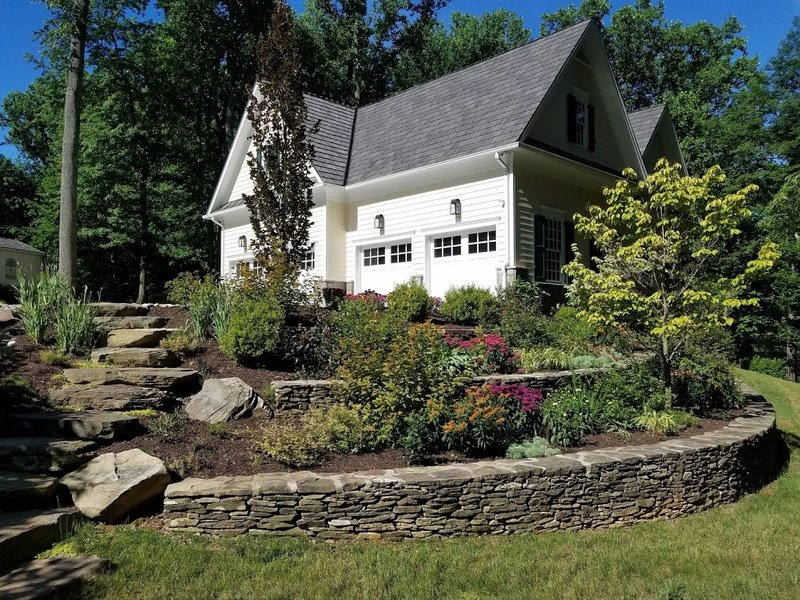Simple Landscaping Tips to Control Soil Erosion at Home
Keeping your yard beautiful and functional often comes with challenges, and soil erosion is one of them. Erosion happens when wind, rain, or other elements wash away the top layer of soil, leading to unstable ground, loss of nutrients, and even damage to structures. With some thoughtful landscaping, you can significantly reduce erosion and protect your home. Here are some practical tips for controlling soil erosion in your yard.
Understanding Soil Erosion
Before you can tackle soil erosion, it helps to understand its causes. Common triggers include heavy rainfall, poor drainage, steep slopes, and bare or exposed soil. These conditions make it easy for soil particles to detach and wash away. Erosion not only weakens the integrity of your yard but can also lead to landscape damage or issues with your foundation. Preventive measures like strategic landscaping can help you address these concerns effectively.
Use Ground Cover Plants
One of the easiest ways to stabilize soil is by planting ground cover vegetation. These plants form a natural barrier, holding the soil with their roots and shielding it from rainfall. Some effective ground cover options include low-growing grasses, creeping plants, or shrubs. When choosing plants, look for species that thrive in your area’s climate and soil type. This ensures they establish roots quickly and provide long-term erosion control.
Add Mulch to Exposed Areas
Mulching is another great way to prevent soil from eroding. A layer of mulch, such as wood chips, bark, or shredded leaves, provides protective coverage for the soil. It slows down water runoff, reduces evaporation, and prevents soil from becoming compacted. Spread mulch around flower beds, trees, or any exposed patches of soil to enhance moisture retention and reduce erosion.
Install Retaining Walls or Terraces
Sloped landscapes are especially prone to erosion, but you can address this by installing retaining walls or terraces. Retaining walls help hold soil in place, preventing it from washing downhill during heavy rains. You can build them using natural stone, concrete blocks, or treated wood. Conversely, terracing involves creating stepped levels on a slope, with each level bordered by small walls. Both methods beautify your yard while improving its functionality.
READ MORE : Upgrade Your Property Security with Advanced Gate Entry Systems
Create a Rain Garden
Rain gardens are beautiful and functional when it comes to controlling erosion. These gardens consist of water-tolerant plants placed strategically in low-lying areas of your landscape. They act as natural water collection zones, soaking up excess water and preventing it from causing erosion. Native plants are an excellent choice for rain gardens because they require minimal maintenance and adapt well to local weather conditions.
Redirect Water with Drainage Systems
Water runoff is a major contributor to erosion. Installing proper drainage systems can help redirect water away from vulnerable areas in your yard. French drains, for example, use perforated pipes to collect and channel water underground, minimizing surface water flow. Similarly, dry creek beds are decorative rock-lined channels that guide water where you want it to go, reducing its erosive impact.
Use Rocks and Gravel
Adding rocks and gravel to your yard effectively stabilizes soil, especially in high-risk areas. Rocks act as a physical barrier, slowing water flow and preventing soil from being washed away. You can use them to create pathways, line flower beds, or cover slopes. Try combining rocks with drought-resistant plants for a cohesive design to create a natural and erosion-resistant landscape.
Aerate Your Lawn Regularly
Compacted soil is more prone to erosion because water cannot penetrate it easily, increasing runoff. Aerating your lawn helps loosen compacted soil, allowing water to seep in and improve root systems. This not only reduces erosion but also promotes healthy plant growth. Plan to aerate your lawn once or twice yearly to maintain its structure and prevent soil loss.
Consider Professional Assistance
Sometimes, soil erosion may require advanced solutions for long-term control. Professional services, such as soil grading or concrete leveling in Salt Lake City, can help ensure proper drainage and safeguard your property from erosion-related issues. These specialized methods can address underlying issues that basic landscaping techniques might not resolve.
Conclusion
Controlling soil erosion at home doesn’t have to be overwhelming. You can protect your soil and enhance your outdoor space by incorporating simple landscaping techniques such as planting ground covers, building retaining walls, and adding mulch. With these steps, you’ll prevent erosion and create a beautiful and sustainable yard that thrives for years to come.

